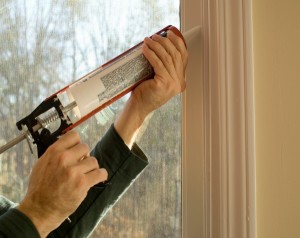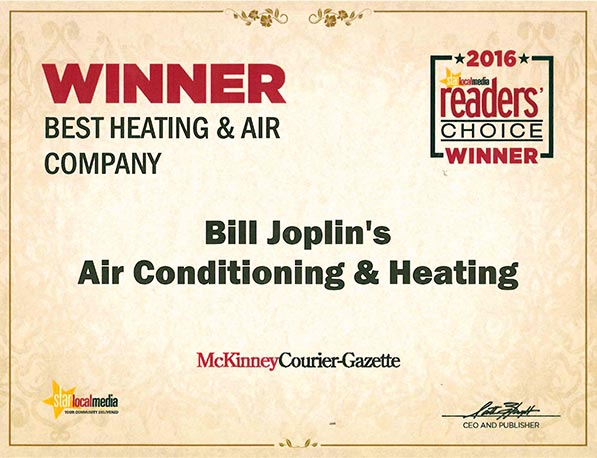The dramatic temperature variations in the Frisco and McKinney area between summer and winter mean it takes careful planning to keep your home comfortable year-round. To ensure your comfort without running up high energy bills, you’ll need to take a few steps to improve your home’s overall energy efficiency. Many of these are relatively inexpensive upgrades you can perform yourself. Others are best done with help from a heating and cooling professional.
Your Attic Needs Insulation and Ventilation
Because your attic covers your whole house, the energy efficiency of this space has a major influence on the building’s efficiency. Sufficient insulation and ventilation are the most important factors here.
In winter, warm air produced by your furnace naturally rises toward the ceiling. When the attic lacks sufficient insulation, the warm air seeps right into the attic and out through the roof. This loss is exacerbated by air leaks that let in cold air. Your rooms don’t stay warm, so your furnace has to work harder to keep supplying warm air.
Moisture damage and mold growth are additional threats. When warm air entering your attic hits the cold surfaces there, condensation develops. This moisture can damage wood, drywall, and insulation. It also encourages mold growth, which causes further rot and releases spores into the air that can irritate your lungs.
Attic insulation helps control your summer cooling bills, too. Even on milder summer day, temperatures in an attic can quickly rise above 100 degrees. Insulation holds back that heat so your attic ventilation can remove it.
Before you add insulation to your attic, seal any air leaks with caulk or expanding spray foam insulation as appropriate. Common areas for leaks include:
- Where the walls and attic floor meet
- Kneewalls
- Dropped soffits
- Recessed lighting
- Penetrations for wiring and pipes
- Appliance flues
In the Frisco area, an attic should have at least 10 inches of fiberglass batt insulation. If your attic has only 3 or 4 inches, add another 6- to 10-inch layer to achieve an R-25 to R-38 level of insulation. You’ll improve the attic’s energy efficiency enough to lower your heating and cooling bills and reduce risk of damage.
You can lay batt ventilation yourself, but take care not to block your soffit vents. Blown-in ventilation is another option, although installation requires a blower machine.
Also inspect your ventilation. If you have only soffit vents or have a gable vent on only one side of the attic, your ventilation could use an upgrade. A ridge-and-soffit ventilation system and gable vents on both sides of the attic provide more even airflow.
Efficient Ducts Help Your Furnace and A/C
Your furnace and air conditioner rely on your air duct system to efficiently deliver heated or cooled air to your rooms. No matter what the efficiency rating of the furnace or A/C itself, a problem with your ducts will compromise the energy efficiency of your entire heating and cooling system. You’ll feel less comfortable and end up with higher energy bills, too. Leaks also reduce your home’s air quality by letting in unfiltered air.
In the average American home, leaks cause the duct system to lose 20 to 30 percent of the air it carries. Leaks occur for several different reasons. The duct joints may have been simply pushed together during construction instead of being properly sealed, or the seals may have worn out. Damage caused during remodeling, or by pests such as mice, can also cause leaks.
To improve your duct system’s energy efficiency and your indoor air quality, make sure all your duct joints fit snugly, and seal them with mastic sealant or metal-backed tape, such as foil-backed butyl tape. Holes can often be repaired with fiberglass mesh and mastic or tape.
For ducts that run through unconditioned spaces, such as the attic or crawlspace, insulation is another way to boost energy efficiency. In winter, as the duct carries heated air through a cold attic or similar space, the air will lose warmth if there’s no insulation to slow the heat transfer. In summer, the opposite happens so your air conditioned air warms up. To minimize this effect, insulate your ducts with R-6 duct wrap insulation or 2 to 3 inches of fiberglass batt insulation.
Doors and Windows: Prevent Drafts and Save All Year
Air leaks around your home waste conditioned air and let in outdoor air along with unwanted humidity and contaminants. Doors and windows are common locations for leaks like these.
Sealing air leaks increases your home’s energy efficiency, stops chilly drafts, and improves your indoor air quality. It also reduces the risk of mold growth inside your walls by keeping out moisture and mold spores.
The first step is to identify the doors and windows that leak. Wait for a breezy day and hold a smoke pen or lit incense stick up to the spots you think might leak. Leaking air will blow the smoke sideways. Seal the leaks with caulk and weatherstripping.
- Caulk – Caulk comes in tube-shaped cartridges and is applied with a caulk gun. This substance is used on non-movable surfaces such as door and window frames. The type of caulk you’ll need depends on the surface you want to seal, although acrylic-latex caulk is a good choice for most doors and windows.
- Weatherstripping – These strips of rubber, foam, metal or other material are used on movable surfaces, such as door stops or the inside tracks of sliding windows. The right weatherstripping choice depends on the location.
Depending on the type of windows you have, they could be responsible for around 18 to 25 percent of your home’s energy loss. If you have old single-pane windows, consider replacing them with Energy Star-qualified windows. Alternatively, install storm windows for the winter. These can reduce your heat loss by 10 to 20 percent.
Efficient Walls and Floors Surround Your Home in Comfort
Air sealing and insulation are almost as important for your walls and floors as they are for your attic. As with the attic, your first step should be to seal air leaks. You’ll find these around:
- Baseboards and crown molding
- Electrical outlets and switch plates
- The fireplace
- Penetrations for gas and plumbing pipes
- Penetrations for electrical, phone, and other wiring
- Penetrations for appliance vents
Smaller leaks can be sealed with caulk, and gaps between 1/4 to 3 inches can be sealed with expanding spray foam. Gaps wider than 3 inches may need to be stuffed with insulation then sealed with spray foam.
Improving the insulation in your walls and floors is trickier because these spaces aren’t easily accessible. If your walls and floors always feel cold in winter, or you have another reason to suspect they lack insulation, contact a heating and cooling professional for an energy audit. During this assessment of your home’s energy efficiency, the technician will take infrared images of your home that show where heat loss or gain is occurring. These are the areas that could benefit from more insulation.
Adding insulation doesn’t have to mean tearing up your walls and floors. Loose-fill insulation can be blown into place through relatively small holes.
Basement and Crawl Space
Just as they do above ground, air leaks and lack of insulation below your house make it harder to keep your rooms comfortable. If your floor is chilly in winter even when the rest of the room is warm, it’s a sign your basement and crawl space could use some energy efficiency upgrades.
In the basement, use acrylic-latex caulk or expanding foam spray as appropriate to seal leaks around:
- Penetrations for wiring, pipes, and other utility lines
- Penetrations for air ducts and appliance vents
- The tops and bottoms of the rim joists in the spaces between the floor joists
Because rim joints are especially prone to energy loss, these should be both sealed and insulated. To do this, cut rigid foam insulation into strips, then into smaller sections that will fit against the rim joists between the floor joists. Cut the sections as necessary to fit around pipes and other penetrations. After fitting these sections of insulation into place, caulk around the edges to prevent air leaks. Gaps of more than 1/4 inch, such as around pipes, should be filled with spray foam.
Insulating the crawl space can also help moderate your indoor temperatures and reduce your heating and cooling bills. Rigid foam insulation along the crawl space walls is often the best choice. Laying a 6-mm layer of polyethylene on the floor to create a vapor barrier helps protect the crawl space and your floor from moisture damage.
Whether you want to start off with an energy audit or you’d like a pro’s help with the home energy efficiency improvements you have planned, contact us at Bill Joplin’s Air Conditioning & Heating. We’ve been serving resident in the McKinney, Frisco, Allen and surrounding communities since 1978.





